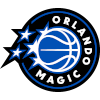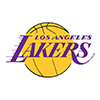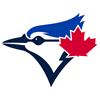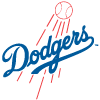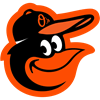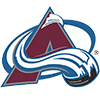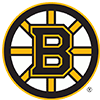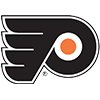I'm pinch hitting for Erik Halterman on the column this week. There's a lot to cover given all the movement at the trade deadline. The focus of this edition of the Barometer will be a combination of things, including playing time losers from all the recent player movement, but also hopefully identifying more under-the-radar risers and fallers based on performance in the last 30 days.
Risers
Springer's tenure with the Blue Jays started slowly as he was limited to only 17 plate appearances prior to June 22. Upon his return, he primarily batted fifth. Quietly, at the beginning of July he began hitting cleanup. Even more quietly, he's supplanted Marcus Semien from the leadoff role across the past week. Springer has gotten on-base at a .476 clip in nine games since he's hit atop the order while also scoring 11 runs and driving in eight. While those numbers aren't sustainable, the short-sample is an illustration of the power of the Jays' lineup.
For bad teams, lineup analysis can perhaps be over-analyzed. However, the Jays are among the best hitting teams regardless of your preferred metric, whether it be wOBA, wRC+, or WRAA. Sticking in the leadoff spot should have strong implications for Springer's ability to rack up counting stats in the final two months of the season.
Riley has been on an incredible power surge, tallying seven home runs in his last 10 days. This is the second such stretch of his season, as he produced
I'm pinch hitting for Erik Halterman on the column this week. There's a lot to cover given all the movement at the trade deadline. The focus of this edition of the Barometer will be a combination of things, including playing time losers from all the recent player movement, but also hopefully identifying more under-the-radar risers and fallers based on performance in the last 30 days.
Risers
Springer's tenure with the Blue Jays started slowly as he was limited to only 17 plate appearances prior to June 22. Upon his return, he primarily batted fifth. Quietly, at the beginning of July he began hitting cleanup. Even more quietly, he's supplanted Marcus Semien from the leadoff role across the past week. Springer has gotten on-base at a .476 clip in nine games since he's hit atop the order while also scoring 11 runs and driving in eight. While those numbers aren't sustainable, the short-sample is an illustration of the power of the Jays' lineup.
For bad teams, lineup analysis can perhaps be over-analyzed. However, the Jays are among the best hitting teams regardless of your preferred metric, whether it be wOBA, wRC+, or WRAA. Sticking in the leadoff spot should have strong implications for Springer's ability to rack up counting stats in the final two months of the season.
Riley has been on an incredible power surge, tallying seven home runs in his last 10 days. This is the second such stretch of his season, as he produced seven home runs in a nine game-span from May 17 to May 26. He inevitably couldn't maintain that pace, and he will once again fall off his recent pace. In that sense, noting his current hot is worthless because we've already seen his peak production.
However, there's more than that superficial analysis. From May 26 to July 24 — the span between his two homer barrages — he still managed 25 RBIs in 46 games. Ronald Acuna's injury dealt a blow to Atlanta's lineup, but the top of the order is still formidable. Since joining Atlanta, Joc Pederson has posted an on-base percentage of .354, Ozzie Albies has maintained a .323 on-base percentage for the season, and Freddie Freeman .393. As the primary cleanup hitter, Riley will benefit even as fewer of his batted balls leave the yard. When he is hot, he has the potential to carry fantasy teams.
Maeda's season is among the most disappointing in the league. He's earned $-5 in roto value to this point. He's battled through arm and groin injuries, but appears to be finally getting on track. In his last five starts, he's delivered a 2.15 ERA and 0.82 WHIP, backed by a tremendous 27.5 K-BB% and 16.4 percent swinging strike rate.
Perhaps most encouraging is that both Maeda's expected results on both an overall and pitch-level basis reflect that he's been more effective. After posting overall xwOBA marks of .351, .331. and .309 in April, May and June, respectively, Maeda has seen that drop to .226 in July. He's seen a corresponding drop in xwOBA on his four-seamer, splitter and slider — his three most thrown pitches. While wxOBA is descriptive rather than predictive, his recent results affirm that he has improved his form. Given his past track record of success, it also provides hope that he's overcome whatever was plaguing him to begin the season.
Montas has led the league in K-BB% the last 30 days at 32.3 percent. That's led to a 2.10 ERA. What's more interesting to note is how he's reached those results. Montas leads the league in O-swing% in the last 30 days, inducing batters to swing out of the zone at a 40.7 percent clip. That's a sharp increase from his career 32.3 percent and season-long mark of 34.9 percent. His contact rate on pitches outside the zone has dipped even more dramatically, from a season-long rate of 51 to 41 percent the last month. That's allowed him to live out of the zone, and limit the long ball — something that held back his results early in the season. In his first 16 starts of the season, Montas allowed 14 home runs, or 1.4 HR/9. In his five starts since, he's allowed only two home runs, or 0.6 HR/9.
It's time to notice Bader. Largely known for his defense entering the season, he entered the season with a boom-bust profile at the plate. Specifically, he had a career 29.1 percent strikeout rate, .311 wOBA and 95 wRC+. None of those are terrible numbers, but it appeared that Bader was destined to be a better real-life player based on his strong defense, rather than as a fantasy producer at the plate.
However, that's changed this season. Bader is striking out at only a 16.2 percent clip. That's notable in and of itself, but what is even more impressive is how he has gotten to that point. He's swinging at a 43.7 percent rate overall, the highest of his career. In other words, he hasn't simply been more passive. Instead, he's shown an increased ability to make contact, jumping his overall contact rate seven percentage points from his career norm. Although Bader has only 179 plate appearances this season due to injury, he has begun to translate his athleticism into production at the plate.
Fallers
The time for excuses has run out for Suarez. He was understandably given a pass for his 2020 season, after undergoing shoulder surgery in the 2019 offseason and the general variance that can go along with only a 60-game season. His slow start to the 2021 campaign was excused as the team forced him into a role at shortstop, something he clearly wasn't suited for defensively. However, his production hasn't returned even after shifting back to third base full time.
Across the last 30 days, Suarez has posted a miserable 66 wRC+ and .273 wOBA. Now, the impending returns of Mike Moustakas and Nick Senzel will crowd the infield. While Suarez may not be cut out of playing time entirely, he also isn't likely to be a locked in piece of the lineup. At age 29, it's even fair to start to question Suarez's value to both big-league teams and fantasy managers alike.
The trade deadline didn't do any favors for Davis, thanks to the team's addition of Javier Baez. Once Francisco Lindor is able to return — potentially by the end of this week — the crowd in the infield will only grow. Davis figures to be the odd man out. After being out of the lineup Sunday, Davis has now sat three consecutive games and has been losing out on playing time to the likes of Brandon Drury and Jonathan Villar. Once Lindor returns, Drury, Villar and Davis could find themselves on the bench more often than not, assuming the team can maintain full health. While his .301/.389/.506 line looks outstanding, the underlying numbers suggest there's reason for concern beyond a loss in playing time. Davis has struck out at a 32.6 percent rate, and his overall contact rate has dipped by 11 percentage points from his career baseline. Whether his crash comes from a loss of playing time or his underlying skills catching up to him, Davis is in line for a hard landing.
Walker has suddenly lost the ability to find the strike zone. Over the last 30 days, during which time he's made five starts, Walker has a 15.6 percent strikeout rate and has thrown strikes at just a 55 percent rate. The result has been a disastrous 9.00 ERA and 13.5 BB%. It's clear he's lost effectiveness, but less clear is why. It was revealed after Walker's July 24 start that he was dealing shoulder tightness, though he was cleared to take his next turn through the rotation. Other indicators of injury such as velocity and spin rate remain in line with his season-long norms. One thing worth noting, however, is Walker's workload this year compared to past seasons. He's already thrown 99.1 innings, more than he threw between the 2018, 2019 and 2020 campaigns combined. It's a simple answer, but may be the right one in this case: Walker is running out of gas.
There was plenty of debate surrounding Grisham entering this season. The argument was less around his skills and more about his playing time and place in the Padres' batting order. For the vast majority of the season, Grisham backers were on the right side of that debate. Through Sunday, nearly two-thirds of Grisham's at-bats have come from the top two in the batting order. However, in the seven games since the team acquired Adam Frazier, he's hit no higher than sixth in the order and eighth on two occasions — one with a right-hander on the mound.
Even worse is that his playing time seems to be at risk. Of the three games with southpaws on the mound in the team's last seven contests, Grisham was on the bench twice. The seemingly minor acquisition of Jake Marisnick may have big consequences for Grisham, as he adds another right-handed bat the team can turn to when lefties are on the mound. Grisham will still play a primary role with the team, but concerns about his playing time and spot in the order have re-emerged as a concern after the Padres' recent additions.
Darvish capped a disastrous July by allowing a combined nine earned runs across 11 innings in starts at Miami and in San Diego against the Rockies. That's about the softest combination of matchups a pitcher could ask for, yet Darvish couldn't take advantage. Whether it's the loss of sticky substances or the back and hip injury that landed him on the injured list around the All-Star break, it's clear that Darvish wasn't feeling his best in July. Most of his skills remained intact, aside from the fact that he allowed 3.2 HR/9. Darvish may have the most reasons for optimism of this group given that he's still handed out free passes at a strong 5.4 percent rate across the last 30 days — something that plagued him during past struggles in his career. Still, in a pitching landscape where it has become more and more difficult to find trustworthy options, Darvish has failed to step up in recent starts.










